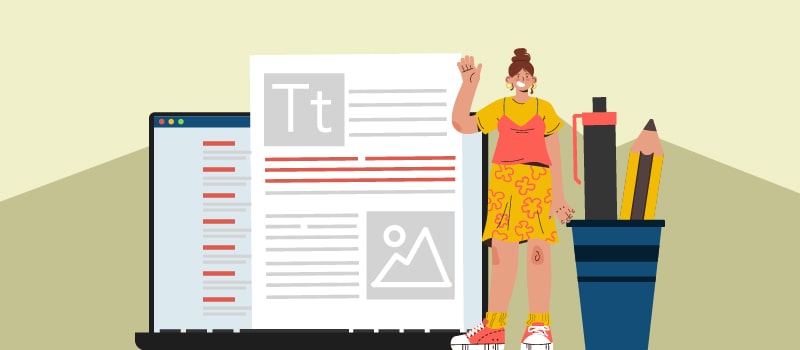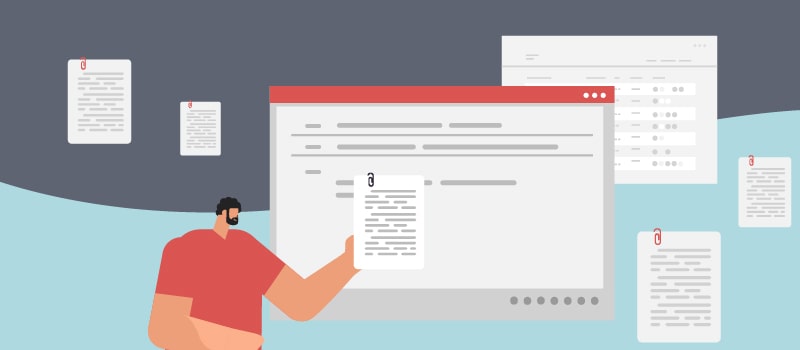
Have you ever read a blog post that instantly fascinated you? A well-written content allows you to leave the website with helpful insight and a positive opinion about the writer. You might be curious about how to write a good blog post that influences people. Writing a great piece isn’t easy. But it’s not very difficult to learn either.
In this post, we’ll share some tips on how to write a good blog post that will give you a lot of organic traffic. Let’s start with the four essential elements of good content.
4 Elements Of A Good Blog Post

Depending on your niche, your approach to writing may be slightly different. However, we’ve observed that the most compelling blog posts typically have four essential elements. These are the following:
1. Attention-Grabbing Headline
A good blog post starts with a catchy headline. Take note that it is about just one idea, topic, or story. So before you start blogging, figure out the issue you want to talk about. Choose a temporary headline to give yourself some structure and start writing. You can always change or improve your headline later.
Great titles are descriptive, interesting, and engaging. It should appear like a magazine headline or a TV newsflash, provoking the reader to click the link.
Take time to make an impressive headline. This should be the first step (and the last) before hitting the “publish” button.
2. A Captivating Main Paragraph
Since most people on the Internet have a shorter attention span than with printed material, your opening paragraph is crucial. Don’t blow your chance of making them stay on your blog and finish reading the whole article. If you don’t hook your readers instantly, you might lose them forever.
Start the lead paragraph with a question, a quote, or a thought-provoking statement. You only have one chance. Make it count.
3. Interesting Supporting Ideas
This means the body of the article. The “meat” of the blog post supports your main topic or argument. Every story you tell needs a supporting rationale, which helps the readers understand your subject more. You can do this by making a list of bullet points or a topic outline. Then, write the body of the post using these as your main section or, if appropriate, into sub-headings.
If we consider your blog post a road, these points are the street signs leading your reader to the end.
4. A Compelling Call-To-Action

You might have captivated your readers’ attention with a good title and led them in with an interesting main paragraph using the previous elements effectively. If you’ve also drawn them through with compelling points, you need to wrap it up nicely.
Go straight to the point. You don’t want your audience flustered about why they read your blog post in the first place, do you? Provide them with something to take away.
A call-to-action is the part of the post where you invite your readers to answer a question, leave a comment, or share your post. Make it concise, clear, and actionable.
8 Tips On How To Write A Good Blog Post

Below are the expert tips for writing a blog post:
1. Select A Good Topic
The initial step toward writing a blog post is to choose an exciting topic. Once you know what your readers want to read about, your post will continue to get more traffic after it is published.
Try to make the post based on reader feedback, a common issue in the society or industry, or competitor analysis.

Platforms like BuzzSumo can help you find out what topics are trending. You can also try these free SEO tools for more suggestions on how to develop blog post ideas that are search engine optimized.
2. Research
Once you have your idea, research the first page of search engines and your main competitors to see how you can improve your content. If you can’t write a high-quality post better than theirs, don’t worry! Conducting research allows you to add more valuable information to your article.
3. Jot Down Notes and Prepare An Outline
While doing your research, keep a notebook handy where you can take down the crucial points and outline your topic.
Okay, if you’re more comfortable typing it down on your computer, at least keep a Google doc tab open. We like using Google docs often because, unlike using a notebook, we don’t have to stress about losing or misplacing it.
4. Start Drafting Your Blog Post
After completing the outline, you can begin writing your post. You can draft it directly on your WordPress dashboard or a Google Doc. Go what saves you more time and effort.
5. Hook Your Readers With A Great Introduction

If you can hook your audience with a fantastic introduction, consider half your work done. Because if your introduction is boring, people won’t bother to read the rest. Most writers find it easier to write the blog post’s body first and save writing the intro for last.
An excellent way to write a good intro is to ask questions about the reader’s challenges or problems. With that, you can tell them how reading your blog can help them overcome them. This is an effective way to grab your readers’ attention, and they’ll want to read it till the end to find the solution.
6. Maintain A Friendly, Conversational Tone
Don’t take for granted the style and tone of your writing. These elements can make a big difference. Writing like you’re talking to your audience can make them feel like they’re having a conversation with someone instead of reading a post. This is a great way to establish a loyal readership.
7. Make Your Content Skimmable

People usually don’t read blog posts word-for-word. Instead, they scan them for the information they need.
That’s why it’s essential to format your posts in an easy way to scan. It will help your readers get valuable information quickly to continue reading your post.
Here are a few ways to make your blog posts skimmable:
- Use Sub-headings: Sub-headings enable your readers to see the main topics of your post and help you stay organized.
- Write Short Sentences: Short sentences are more readable. Long sentences can make your blog post hard to understand.
- Keep Paragraphs Short: It’s harder to read when your paragraphs are too long. The recommended length is 2-4 sentences in most sections, with some 1-sentence and eye-catching paragraphs.
- Use Bullet Points: When writing a list, use bullet points to make your message more precise and clear. Plus, it’s easier to scan instead of listing items in a sentence.
These tips guarantee your text is visually engaging, and your followers will be more likely to read the entire blog post.
8. Use Visually-Appealing Images
A simple image can make a long, boring post more fun and interesting.
What you can’t explain in words can be done with an image or a screenshot. Likewise, it breaks the monotony of words and offers a refreshing visual break to the reader, keeping them engaged for longer.
Conclusion
There you go. We’ve shared the essential elements and some of the proven tips on how to write a good blog post. If you liked this post, check out how to start a blog and the top 10 free blogging platforms that will help you publish your stories online.
About the author

Rowena Zaballa
With a background as a former government employee specializing in urban planning, Rowena transitioned into the world of blogging and SEO content writing. As a passionate storyteller, she uses her expertise to craft engaging and informative content for various audiences.
Table of Contents
- 4 Elements Of A Good Blog Post
- 1. Attention-Grabbing Headline
- 2. A Captivating Main Paragraph
- 3. Interesting Supporting Ideas
- 4. A Compelling Call-To-Action
- 8 Tips On How To Write A Good Blog Post
- 1. Select A Good Topic
- 2. Research
- 3. Jot Down Notes and Prepare An Outline
- 4. Start Drafting Your Blog Post
- 5. Hook Your Readers With A Great Introduction
- 6. Maintain A Friendly, Conversational Tone
- 7. Make Your Content Skimmable
- 8. Use Visually-Appealing Images
- Conclusion










